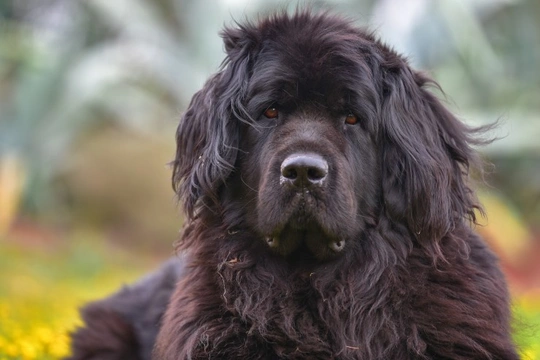
Caring for a dog with a naturally oily coat
Dog fur comes in a huge array of different colours, patterns, lengths and textures, all of which are beautiful in their own ways and that reflect the different origins of individual dog breeds, such as where in the world they originate from and the type of activities that they would have historically performed.
This is why dogs from very cold, harsh climates tend to have very thick, heavy, multi-layered coats, whilst dogs from warmer, dryer countries will have much shorter and finer fur.
However, length and texture isn’t the only thing that reflects where a dog hails from and how they have evolved over time to suit the conditions; the type of environments that dogs live in and their working roles too can have an impact.
This means that some dog breeds naturally have a rather oilier coat than others, and caring for a coat of this type is rather different than caring for a dog with a dryer coat. Even owners of dogs of some breeds that tend to have oilier coats a standard aren’t really aware that this is a factor to contend with, which can result in owners giving the dog too many baths to reduce the oiliness of the coat, which can upset its natural balance.
In this article we will look at some dog breeds that tend to have coats that are on the oily side, explain why this is, and share tips on the appropriate care of a dog with an oily coat. Read on to learn more.
Why do some dogs have oily coats?
An oily coat in some dogs can be cause for concern, as within breeds that don’t have a naturally oily coat, this can be an indication of a hormonal imbalance, an underlying health condition, or even overly-frequent bathing, which can upset the coat’s natural balance and lead to an overproduction of oil.
However, dog breeds whose coats tend to be naturally on the oily side have evolved with this trait, as it provides some advantages within the type of environments and working roles that the dog performs.
This means that many water-retrieving breeds have oily coats to help them to repel water, provide insulation, and help them to dry off faster when they exit the water, as do some dogs that commonly work outside in all weathers and inhospitable conditions.
Within dogs that have naturally oily coats, this type of coat is usually present because of its insulating and water-repellent properties.
Well-known dog breeds that may have oily coats
The Newfoundland dog is one breed that tends to have a more oily coat, and these large, very hairy water dogs also have webbed feet, which reflects their affinity with the water. The same is often true of the coats of retrieving breeds that tend to work on water as well as land, like the Labrador retriever.
Some scenting dog breeds too, like the bloodhound and the Basset hound also tend to have oilier coats, and as their coats are quite short, this can make them feel slightly tacky to the touch.
How to care for a dog with an oily coat
Knowing how to care for the coat of a dog whose fur is naturally oily isn’t always obvious to dog owners, and even owners of oily coated dogs don’t always fully realise that the coat’s oily texture is an inherent trait of the breed, rather than something that needs to be tackled and minimised.
This means that it is quite common for dogs with oily coats to be bathed too often or by means of using overly harsh shampoos to strip the coat’s oils, because this may seem like the right way to go about things.
However, oily coated dogs have oily coats for a reason, and by drying out the coat too much or stripping the oil too harshly, you can cause a number of problems. Your dog’s skin might produce even more oil to try to tackle the dryness, and if your dog’s coat is too dry, it will be dull and flat, and their skin too may be dry and irritated.
Stripping the coat’s oils can also remove some of the waterproofing and protection that your dog benefits from, making them less able to cope with the conditions.
Dogs with oily coats do need to be bathed now and then, just like other dogs, but this should be undertaken only when needed and using gentle shampoos that won’t strip the coat’s natural oils or dry out the skin.
Brushing and grooming the coat is a great way to care for an oily dog coat, as this helps to distribute the oil along the hair from the roots to the tips, reducing greasiness at the roots and helping to insulate and weatherproof the coat itself.
Brushing also stimulates the skin and boosts the circulation, which all helps to keep your dog’s coat healthy.
If you think your dog’s coat may be too oily, or if you’re not sure that their coat should be oily at all, ask your vet to have a look to let you know if there is anything amiss, and to teach you more about how to care for your dog’s coat.
An experienced professional dog groomer will also be able to wash and care for an oily coated dog’s grooming needs appropriately, and can provide advice on the best way to care for their coat on an ongoing basis at home.



